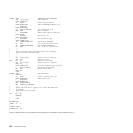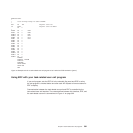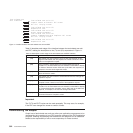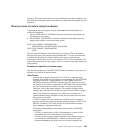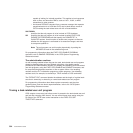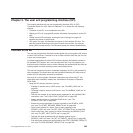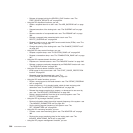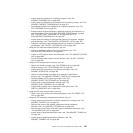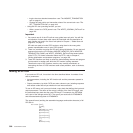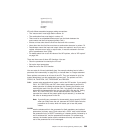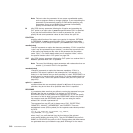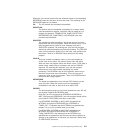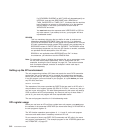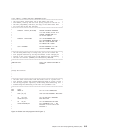
– Inquire about an attached transaction—see “The INQUIRE_TRANSACTION
call” on page 414
– Change the task priority and transaction class of the current task—see “The
SET_TRANSACTION call” on page 418.
v Using the XPI user journaling function, you can:
– Write a record to a CICS journal—see “The WRITE_JOURNAL_DATA call” on
page 419.
Important
1. You cannot use all of the XPI calls at every global user exit point. You will find
an indication of when these calls cannot be used both with the description of
each function call, and in the lists of exit points in Chapter 1, “Global user exit
programs,” on page 3.
XPI calls are used to invoke CICS services; using them in the wrong exits
causes unpredictable errors in your CICS system.
2. There is a restriction on using the XPI early during initialization. Do not start exit
programs that use the XPI functions INQUIRE_MONITOR_DATA, MONITOR,
TRANSACTION_DUMP, and WRITE_JOURNAL_DATA until the second phase
of the PLTPI. For further information about the PLTPI, refer to Chapter 4,
“Writing initialization and shutdown programs,” on page 425.
3. These XPI functions are likely to cause the task executing the user exit program
to lose control to another task while the XPI function is being executed.
Therefore the use of XPI functions must be very carefully considered, as
interrupting the flow of CICS functions could cause problems, such as lockouts,
to occur.
Making an XPI call
If you make an XPI call, it must be in the form described below. It consists of two
sets of parameters:
v Input parameters, including the XPI function call and the parameters passed to
the call
v Output parameters, by which CICS can return values to you, including response
and reason codes that tell you whether the call was successful.
To use an XPI macro call, you must include a copy book that defines the input and
output parameters. The name of the macro is always of the form DFHxxyyX, and
the associated copy book has the name DFHxxyyY. For example, the GETMAIN
call is part of the storage control XPI. The macro you would use is DFHSMMCX
and the associated copy book is DFHSMMCY.
The general format (omitting the assembler-language continuation character) of all
XPI calls is:
macro-name [CALL],
[CLEAR],
[IN,
FUNCTION(call_name),
mandin1(value),
mandin2(value),
...
[optin1(value),]
[optin2(value),]
...]
[OUT,
mandout1(value),
308 Customization Guide



